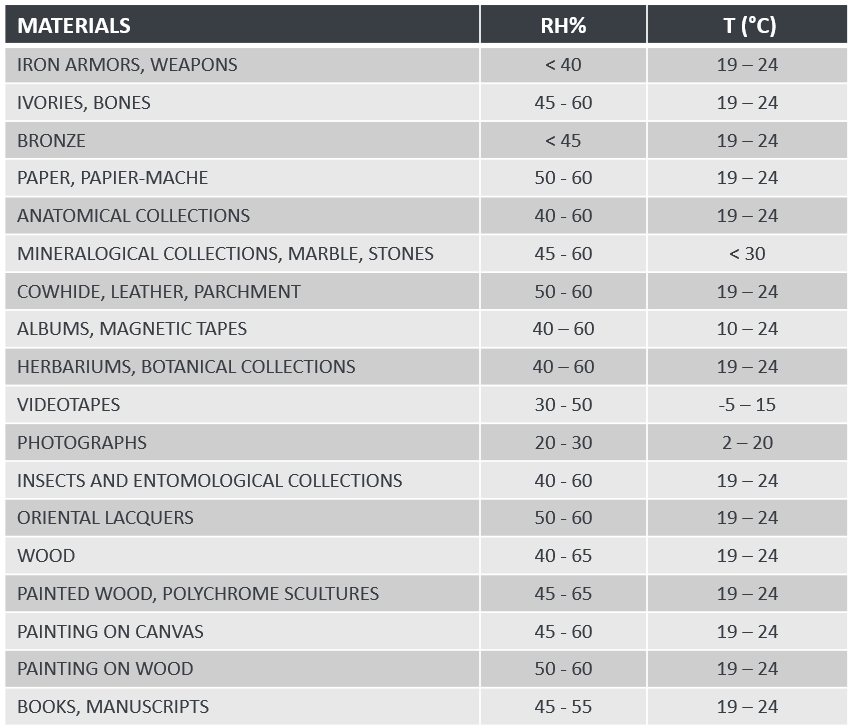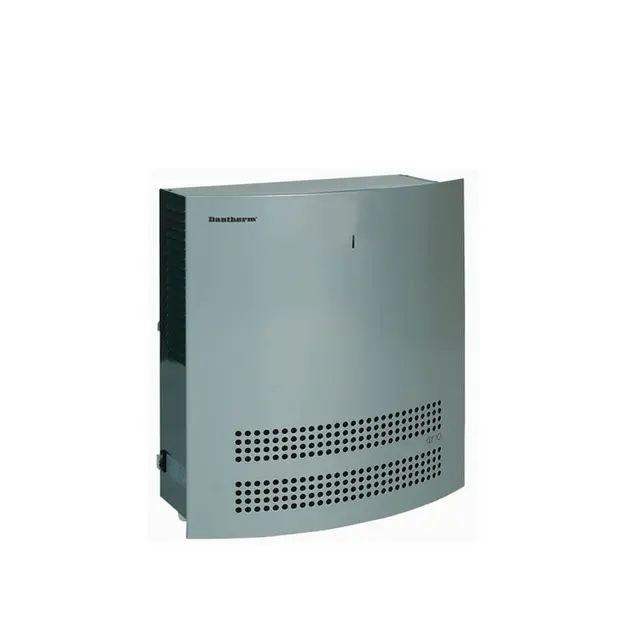Dehumidify to preserve museums and galleries

- Home
- Insights
- Humidity control and drying insights
- Dehumidify to preserve museums and galleries
Did you know that the majority of museums and galleries are located in buildings of great historical importance and value? Therefore, it is not surprising that curators, building engineers and other professionals take an undivided interest in protecting them from going into decay. Here’s how keeping humidity and temperatures at the right level can help preserve the buildings themselves as well as the artefacts on display.
Think about La Venaria Reale in Turin or the Borghese gallery in Rome, two of Italy’s most visited museums. The buildings that are home to these museums and the collections on display contribute equally to attracting visitors. For some, the buildings even constitute the main attraction.
The challenges of humidity
Buildings like that are part of our cultural heritage and need to be cared for to make sure they are undamaged for future generations. That requires the attention of curators be directed at everything that has the potential to deteriorate these structures. Maintaining humidity and temperatures at the optimal level for the environment is an important part of these considerations as keeping them under control will help prevent dampness and damage.
A fluctuating humidity level poses a substantial threat to artwork, furniture and architecture because it causes wood to expand and contract, paint to flake and mould to form, leaving your valuable historical items exposed to the damaging and deteriorative effects of moisture. If the relative humidity is too high, condensation can form on surfaces and mould and rot can set in.
How dehumidifiers protect and preserve museum buildings and artefacts?
This can, however, be avoided by maintaining the relative humidity at a correct and stable level by implementing correctly dimensioned dehumidification solutions. These can be based on refrigerant or desiccant dehumidifiers that have been designed to protect museum buildings and the treasured items on display.
The high-performance dehumidification and ventilation systems regulate and control temperature, humidity and air quality. Recirculating the air and physically removing moisture from it, they also alleviate the need to continuously reheat incoming air as well. Not only that, because of the integrated reversible heat pumps, the units convert energy taken out of the room as moisture to provide useful heat to warm the room, accelerating the drying process. This again makes outside installations redundant.
Another important thing to remember is that different materials require different temperature and humidity levels. For instance, storing film media is very different from storing fossils and bones. The distinct differences in the below table underline the importance of being able to fully control your indoor air characteristics.

Cost savings of up to 500%
Typically, as a by-product of the dehumidification process, for every unit of energy that our dehumidifier consumers, it will convert 2.5 times this amount to useable heat. The potential energy savings are huge. In fact, compared to using heating to try and control humidity levels, cost savings of 500% are not unusual. The units have built in humidity control, so will never waste energy when the correct humidity is reached, and there is no possibility of drying out the space too much.
Dantherm offers a complete range of dehumidifier solutions capable of operating efficiently over an ambient air temperature range of between 0 and 40°C. Based on a flexible design, they come fully packaged and are easy to install. All products are supported by an in-house applications department and nationwide service network.
Here’s a short video that demonstrates just how simple it is to install one of them:
To find out about the options available, installation and how to get the best results, don’t hesitate to get in touch with our team.
Related products
Featured insights

Are your valuable artefacts at risk?

Preserving history from the constant threat of high humidity

Why unregulated humidity creates big problems for paper
Need help with choosing the right solution? Our team of over 100 climate control experts can assist.
You can also reach out or join the discussion on our Social Media. Check out our LinkedIn page.





